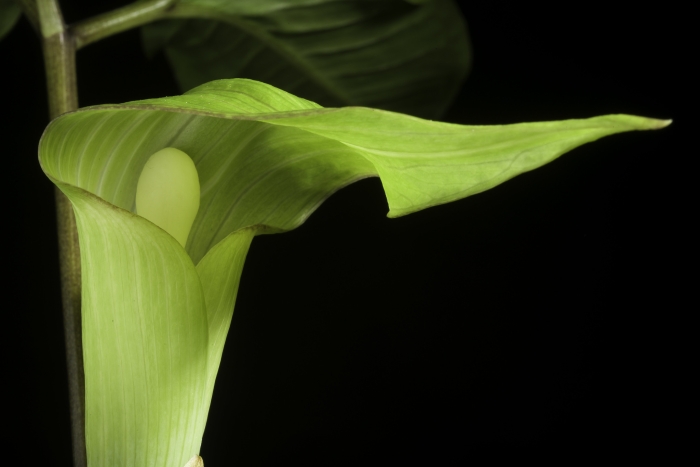Amur Jack In The Pulpit
(Arisaema amurense)
Amur Jack In The Pulpit (Arisaema amurense)
/
/

sunoochi
CC BY 2.0
Image By:
sunoochi
Recorded By:
Copyright:
CC BY 2.0
Copyright Notice:
Photo by: sunoochi | License Type: CC BY 2.0 | License URL: https://creativecommons.org/licenses/by/2.0 | Uploader: BeautifulMedia | Publisher: Wikimedia Commons |













Estimated Native Range
Summary
Arisaema amurense, commonly known as Amur Jack In The Pulpit, is a perennial herb that can be deciduous or semi-deciduous depending on the climate. It is native to forest understories and mountain slopes in East Asia, including regions of China, Korea, Japan, and the Russian Far East. This plant typically grows to a height of 2 feet (0.6 meters) and a width of 3 feet (0.9 meters), featuring a distinctive inflorescence with a hooded spathe that is green striped with purple, and a central spadix. The flowering period occurs in late spring to early summer, and the flowers are often hidden beneath the foliage, creating a subtle but intriguing visual effect. After flowering, it produces clusters of bright red berries that are attractive but toxic if ingested.
Amur Jack In The Pulpit is valued for its unique flower structure and is often used in woodland gardens, shade gardens, and as a specimen plant in areas that mimic its native habitat. It prefers partial to full shade and requires consistently moist, well-drained soil rich in organic matter. While it is generally low-maintenance, it can be susceptible to slug damage and root rot if the soil is too wet. It is not commonly affected by serious pests or diseases. Gardeners should be aware that all parts of the plant contain calcium oxalate crystals and can be irritating if ingested or handled without gloves.CC BY-SA 4.0
Amur Jack In The Pulpit is valued for its unique flower structure and is often used in woodland gardens, shade gardens, and as a specimen plant in areas that mimic its native habitat. It prefers partial to full shade and requires consistently moist, well-drained soil rich in organic matter. While it is generally low-maintenance, it can be susceptible to slug damage and root rot if the soil is too wet. It is not commonly affected by serious pests or diseases. Gardeners should be aware that all parts of the plant contain calcium oxalate crystals and can be irritating if ingested or handled without gloves.CC BY-SA 4.0
Plant Description
- Plant Type: Herb
- Height: 0.8-1.6 feet
- Width: 1-2.5 feet
- Growth Rate: Slow
- Flower Color: Green, Purple
- Flowering Season: Spring, Summer
- Leaf Retention: Deciduous
Growth Requirements
- Sun: Part Shade, Full Shade
- Water: Medium
- Drainage: Slow, Medium
Common Uses
Bird Garden, Edible*Disclaimer: Easyscape's listed plant edibility is for informational use. Always verify the safety and proper identification of any plant before consumption., Low Maintenance
Natural Habitat
Native to forest understories and mountain slopes in East Asia
Other Names
Common Names: Amurkobrakalla, Tian Nan Xing
Scientific Names: , Arisaema amurense, Arisaema amurense f. serratum, Arisaema robustum, Arisaema amurense var. serratum, Arisaema amurense subsp. robustum, Arisaema amurense var. robustum, Arisaema robustum var. purpureum, Arisaema amurense f. violaceum, Arisaema amurense var. amurense
GBIF Accepted Name: Arisaema amurense Maxim.